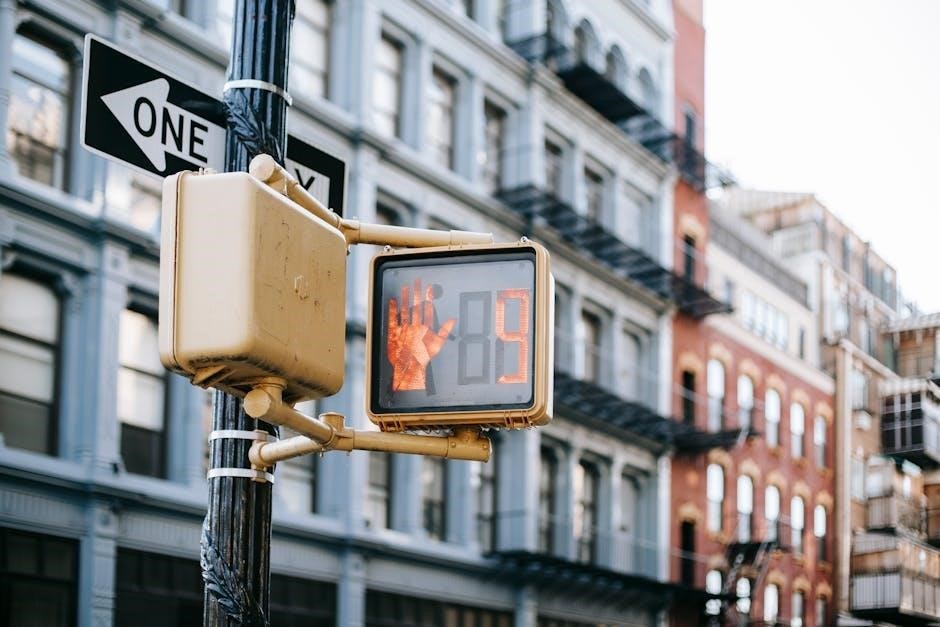Despite its provocative title‚ A Burglar’s Guide to the City isn’t a manual for crime but a fascinating exploration of how urban design inherently enables burglary‚ revealing the hidden interplay between architecture‚ crime‚ and city planning.
Understanding the Book’s Purpose and Scope
A Burglar’s Guide to the City explores the intricate relationship between urban design and criminal activity‚ challenging the notion that burglary is merely a moral failing. Geoff Manaugh examines how architecture and city planning unintentionally create opportunities for crime‚ offering insights into the spatial dynamics of urban environments. By tracing the historical and contemporary intersections of burglary and architecture‚ the book aims to redefine how we understand and prevent crime‚ ultimately advocating for safer‚ more resilient cities through informed design.
Debunking the Notion of Promoting Crime
Contrary to its title‚ A Burglar’s Guide to the City does not glorify or promote criminal activity. Instead‚ it critically examines how urban environments are designed in ways that unintentionally enable burglary. By exploring the spatial dynamics of cities‚ the book reveals how architecture and planning can inadvertently create opportunities for crime. Rather than encouraging wrongdoing‚ it seeks to illuminate the unintended consequences of design‚ offering a unique perspective on how to prevent crime through smarter urban development and awareness of these hidden vulnerabilities.

The Evolution of Burglary in Urban Environments
Burglary has evolved alongside cities‚ from ancient Rome to modern metropolises‚ shaped by urban design and architectural advancements‚ reflecting how criminals adapt to changing environments and opportunities.
Historical Context: From Ancient Rome to Modern Cities
Burglary’s history traces back to ancient civilizations‚ where urban density and wealth concentration created opportunities for theft. In ancient Rome‚ thieves targeted temples and homes‚ exploiting architectural weaknesses. During the Middle Ages‚ European cities’ narrow streets and hidden alleys facilitated covert break-ins. The modern era saw burglars adapting to new materials and designs‚ from safes to skyscrapers. This historical journey reveals how urban environments have consistently shaped criminal strategies‚ with architecture serving as both a barrier and a gateway for illicit activities‚ as explored in A Burglar’s Guide to the City.
How Architecture Shapes Criminal Opportunities
Architecture inadvertently creates vulnerabilities that burglars exploit. Designs emphasizing privacy‚ such as high fences or secluded entrances‚ often conceal criminal activities. Urban structures like tunnels‚ hidden passages‚ and unused spaces provide escape routes and staging areas. Additionally‚ modern smart homes‚ despite their security features‚ introduce new weaknesses through technological vulnerabilities‚ as highlighted in A Burglar’s Guide to the City. These elements illustrate how the built environment can inadvertently facilitate crime‚ making it a silent accomplice in urban burglary.
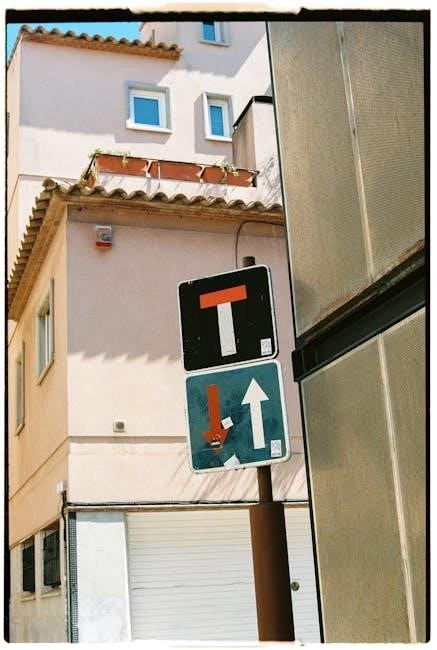
The Role of Architecture in Burglary
Architecture plays a pivotal role in burglary by designing structures with exploitable vulnerabilities‚ unintentionally creating access points for criminals to infiltrate and navigate urban spaces effectively.
How Buildings are Designed to be Broken Into
While architects design buildings with functionality and aesthetics in mind‚ unintended vulnerabilities often emerge‚ creating opportunities for burglars to exploit. These flaws‚ such as hidden passages‚ weak structural points‚ and poorly secured entryways‚ are frequently unintentional yet exploitable. For instance‚ George Leonidas Leslie‚ an architect-turned-criminal‚ famously designed bank vaults with hidden weaknesses‚ knowing they could later be breached. This duality in design highlights how buildings‚ despite their intended purposes‚ often inadvertently provide pathways for criminal entry and navigation.
The Influence of Urban Planning on Crime Patterns
Urban planning plays a crucial role in shaping crime patterns‚ as the physical design of cities often unintentionally creates opportunities for criminal activity; Geoff Manaugh highlights how the layout of neighborhoods‚ alleyways‚ and buildings can inadvertently enable burglars to navigate and exploit urban environments. For instance‚ Los Angeles’s sprawling design and distinct neighborhoods provide a unique landscape for crime‚ where the built environment influences both criminal strategies and policing efforts. This interplay between urban design and criminal behavior underscores how cities are inherently vulnerable to such exploits.

Notorious Burglars and Their Urban Exploits
Notorious burglars have long exploited urban environments‚ with tactics ranging from tunneling to sophisticated break-ins. Their exploits reveal how city design inadvertently aids criminal ingenuity and navigation.
George Leonidas Leslie: The Architect-Turned-Criminal
George Leonidas Leslie‚ a trained architect‚ turned his expertise into a criminal enterprise‚ revolutionizing burglary in late 19th-century America. His architectural knowledge allowed him to design intricate tunnel systems and exploit building weaknesses‚ making him one of the most prolific bank robbers of his time. Leslie’s unique blend of creativity and criminal ambition showcased how architectural insight could be weaponized‚ leaving a lasting impact on urban crime and its methods.
Modern-Day Burglars and Their Architectural Insights
Modern burglars leverage advanced knowledge of urban design and technology to exploit vulnerabilities in smart homes and city infrastructure. They study architectural blueprints to identify weak points‚ using tools like thermal imaging and 3D mapping to plan heists meticulously. Their insights highlight how contemporary architecture‚ despite its sophistication‚ often unintentionally aids criminal activities‚ emphasizing the need for proactive security measures in urban planning and design to counter such strategic exploitation.
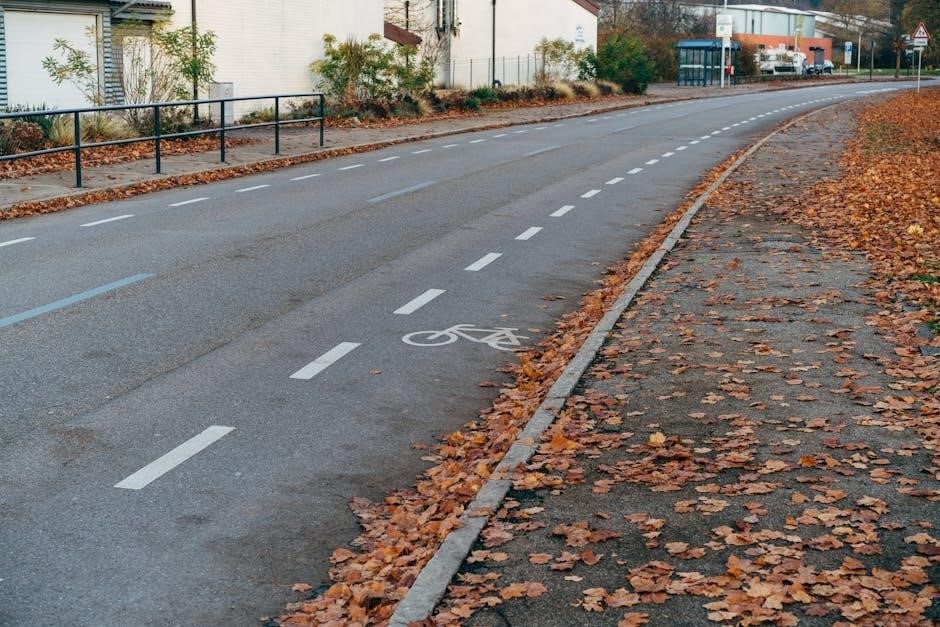
The Psychology of Urban Crime
Burglars view cities as complex systems to manipulate‚ exploiting architectural weaknesses and spatial opportunities. Their mindset reveals a deep understanding of how urban environments can be strategically navigated.
How Burglars Perceive and Navigate the City
Burglars view cities as intricate systems‚ identifying vulnerabilities in architecture and infrastructure. They navigate urban landscapes by exploiting spatial opportunities‚ from hidden passages to unsecured access points. Historical examples‚ like the use of tunnels in ancient Rome‚ highlight their strategic perception. Modern burglars adapt this mindset‚ using mental maps to evade detection and target weaknesses in urban design. Their ability to reinterpret the city’s structure reveals a profound understanding of how built environments can be manipulated for criminal gain‚ making them adept navigators of urban spaces.
The Mental Maps of Criminals in Urban Landscapes
Criminals develop mental maps of cities‚ identifying vulnerabilities in architecture and infrastructure. These maps highlight entry points‚ escape routes‚ and hiding spots‚ shaped by their unique perception of urban spaces. Historical figures like George Leonidas Leslie‚ an architect-turned-burglar‚ exemplify how criminals exploit spatial knowledge. Modern burglars similarly navigate cities by memorizing patterns‚ from alleyways to shadows‚ creating a cognitive blueprint of opportunities. These mental maps reveal how urban design inadvertently aids criminal navigation‚ turning cities into strategic playgrounds for those who understand their hidden rhythms and weaknesses.
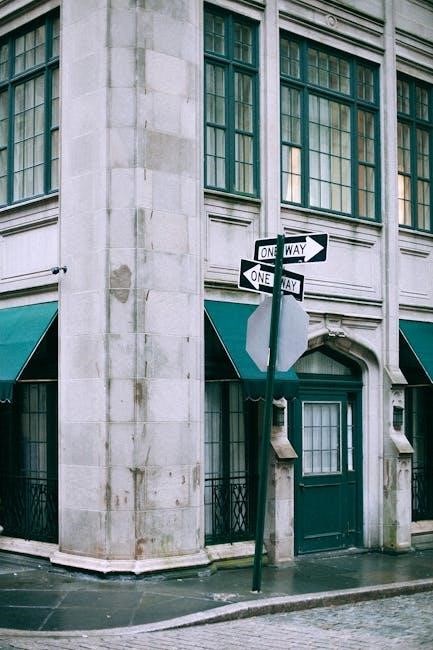
Techniques of Urban Burglary
Urban burglars exploit tunnels‚ hidden passages‚ and weaknesses in smart home technology to navigate and infiltrate city structures‚ blending architectural insight with criminal ingenuity;
The Use of Tunnels‚ Hidden Passages‚ and Secret Spaces
Historical heists reveal burglars’ mastery of tunnels and hidden passages‚ exploiting urban infrastructure to infiltrate secure locations. From ancient Rome to modern cities‚ criminals have used underground networks and concealed routes to evade detection. In the 19th century‚ George Leonidas Leslie famously utilized tunnels to rob banks‚ showcasing the enduring appeal of subterranean strategies. Today‚ burglars adapt these techniques‚ leveraging abandoned infrastructure and architectural blind spots to navigate undetected. Secret spaces within buildings‚ such as hidden rooms or crawl spaces‚ further enable stealthy access‚ highlighting the enduring role of spatial ingenuity in urban crime.
Exploiting Weaknesses in Smart Home Technology
Modern burglars increasingly exploit vulnerabilities in smart home systems‚ bypassing advanced security measures through unsecured networks or outdated software. Weaknesses in IoT devices‚ such as poorly encrypted communications‚ allow criminals to disable alarms or cameras remotely. Signal jamming and social engineering tactics further enable access‚ highlighting the dark side of smart technology. As urban homes rely more on connected systems‚ the susceptibility of these tools to hacking becomes a growing concern in modern burglary strategies.
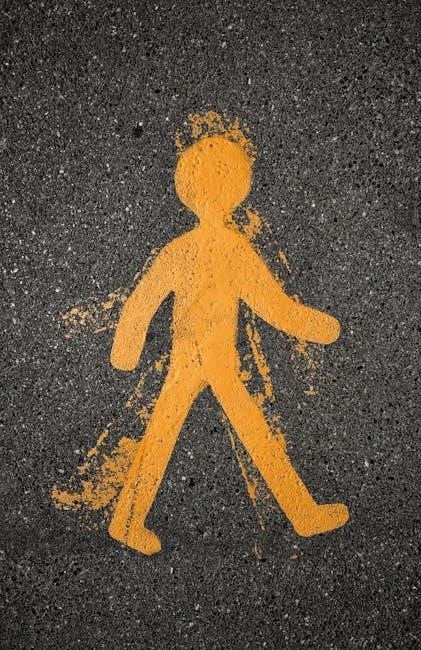
Crime Prevention Strategies
Understanding burglary patterns is key to designing safer cities through reinforced structures‚ smart technology‚ and community engagement to deter urban criminal activities more effectively.
Designing Safer Cities Through Architectural Solutions
Architectural solutions play a pivotal role in preventing urban crime by integrating reinforced structures‚ strategic lighting‚ and visible access points. These designs deter burglars by minimizing hiding spots and increasing visibility. Cities can be transformed into secure environments by adopting crime prevention through environmental design (CPTED) principles‚ which focus on natural surveillance and territorial reinforcement. Such strategies ensure that urban spaces are not only functional but also safe‚ reducing criminal opportunities and fostering community trust.
Community Roles in Reducing Urban Crime
Active community engagement is crucial in combating urban crime. Neighborhood watch programs‚ where residents monitor and report suspicious activities‚ significantly deter burglars. Collaboration with local law enforcement through community policing initiatives fosters trust and shared responsibility. Additionally‚ educational workshops on home security and urban design empower residents to create safer environments. By working together‚ communities can transform urban spaces into less vulnerable targets‚ reducing crime rates and enhancing overall safety and well-being for everyone.

Law Enforcement and Urban Surveillance
Law enforcement leverages urban infrastructure and advanced technology to monitor and prevent crime‚ transforming cities into strategic battlegrounds against burglary through innovative surveillance and policing methods.
How Police Use Urban Infrastructure to Combat Crime
Law enforcement strategically utilizes urban infrastructure to deter and respond to crime. Surveillance cameras‚ strategically placed in high-crime areas‚ monitor activities and aid in investigations. Police also analyze urban layouts to predict criminal movements and set up targeted patrols. By understanding how burglars navigate cities‚ officers can adapt their tactics‚ using alleyways‚ street grids‚ and building designs to their advantage. This symbiotic relationship between urban planning and policing helps create safer environments while countering criminal strategies effectively.
The Role of Technology in Modern Policing
Technology plays a pivotal role in enhancing law enforcement’s ability to combat crime. Advanced surveillance systems‚ facial recognition software‚ and predictive analytics enable police to identify potential threats and respond swiftly. Drones and acoustic sensors monitor urban hotspots‚ while data analytics map crime patterns to optimize patrols. Additionally‚ technologies like license plate readers and real-time crime centers streamline investigations. These tools not only improve efficiency but also foster safer urban environments by anticipating and addressing criminal activities proactively.

Case Studies of Daring Heists
From historical tunnel heists to modern smart home breaches‚ daring burglaries reveal how criminals exploit urban design and technology‚ offering lessons in crime prevention.
These cases highlight the ingenuity and adaptability of criminals in navigating cityscapes.
Historical Heists and Their Architectural Lessons
Historical heists‚ such as those by George Leonidas Leslie‚ reveal how criminals exploited architectural designs. Leslie‚ an architect-turned-burglar‚ used his expertise to infiltrate buildings‚ demonstrating how urban structures inadvertently enable crime. From ancient Rome to modern cities‚ historical crimes highlight the interplay between design and criminal opportunity‚ offering valuable insights for architects and law enforcement. These cases illustrate how understanding past burglaries can inform safer‚ more secure urban designs today‚ blending history with crime prevention strategies.
Modern Heists and Their Urban Planning Implications
Modern heists reveal how burglars exploit weaknesses in smart home technology and urban design. Recent cases highlight criminals’ ability to navigate and manipulate contemporary cityscapes‚ using tunnels‚ hidden passages‚ and architectural vulnerabilities. These crimes underscore the need for adaptive urban planning that anticipates and mitigates such risks. By studying modern heists‚ architects and planners can design safer‚ more resilient cities‚ turning criminal insights into proactive security measures that benefit urban communities and reduce future crime opportunities.
By understanding how burglars navigate urban environments‚ architects and planners can design safer‚ resilient cities‚ transforming criminal insights into proactive security measures for a better urban future.
How Understanding Burglary Can Lead to Better Urban Design
By studying how burglars exploit urban environments‚ architects and planners can identify vulnerabilities and create safer spaces. Understanding criminal tactics reveals opportunities to design buildings and cities with inherent security features‚ such as improved visibility‚ stronger materials‚ and strategic layouts. This proactive approach transforms potential weaknesses into strengths‚ fostering safer communities and reducing crime rates through thoughtful urban design.
The Future of Cities in the Context of Crime and Architecture
The future of urban development lies in harmonizing architecture with crime prevention. As cities grow‚ integrating smart technology and responsive design will be crucial. By learning from historical and modern criminal strategies‚ architects can craft resilient‚ adaptive environments. This fusion of security and innovation promises safer‚ more sustainable cities‚ where urban planning anticipates and mitigates potential threats‚ creating spaces that enhance both functionality and safety for generations to come.
